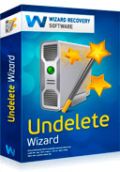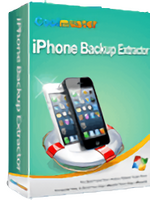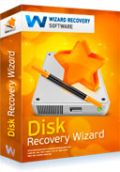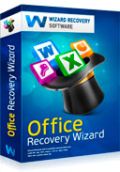Ogni giorno offriamo programmi GRATUITI che altrimenti dovresti comprare!

Giveaway of the day — Undelete Wizard 5.1
Undelete Wizard 5.1 era disponibile come app gratuita il 11 luglio 2014!
Undelete Wizard automatizza il processo di individuazione e di recupero dei file con una procedura guidata step-by-step. Particolare attenzione è rivolta al recupero di alcuni documenti Office come RTF, DOC, PDF, immagini digitali (compresi i file RAW delle digitali reflex), musica e video. Include funzionalità di ripristino avanzate e il supporto a tutti i tipi di dispositivi di memorizzazione, come hard disk del computer, schede di memoria come SD, MMC o CompactFlash, unità flash USB, dischi esterni e molti altri tipi di dispositivi.
Undelete Wizard supporta gli array RAID e dischi dinamici su tutte le versioni di Windows e recupera file da unità formattate in FAT e NTFS. Anche se la maggior parte del vostro disco rigido è "morto"e il resto dei software non riescono a recuperare i vostri documenti, Undelete Wizard sarà ugualmente in grado di individuare e recuperare la maggior parte dei file importanti grazie alla tecnologia PowerSearch! I file eliminati possono essere facilmente visualizzati in anteprima nel loro formato originale.
Potete acquistare software di Wizardrecovery con l'80% di sconto! Usate questo codice coupon: GiveawayoftheDay80
The current text is the result of machine translation. You can help us improve it.
Requisiti di Sistema:
Windows XP/ 2000/ 2003/ 2008/ Vista/ 7
Produttore:
WizardRecovery Inc.Homepage:
http://wizardrecovery.com/undelete/undelete.phpDimensione File:
16.3 MB
Prezzo:
$39.95





Commenti su Undelete Wizard 5.1
Please add a comment explaining the reason behind your vote.
Installed and registered without problems on a Win 8.1 Pro 64 bit system.
A Canadian company with address.
The Undelete Wizard 5.1 is from September 2012.
The only language is English. If you help in translating you'll get a free license.
Upon start a resizable window opens. It shows all connected physical and logical drives. With the wizard (therefor the name...) you can select all parameters for a successful search, search by signatures or date or file size.
This is an "undelete wizard" not a recovery wizard of corrupted files:
Undelete Wizard recovers deleted files from healthy FAT and NTFS storage media. Undelete Wizard is one of the most powerful undelete tools on the market, scanning the entire disk or partition in raw mode in order to locate and recover deleted files.
The results are shown in an understandable way and with the preview, you can select, what you would like to recover.
The software makes a good (professional) impression. Does what it claims. This is a one product company, focusing on recovery software. Already the former Giveaway Disk Recovery Wizard 4.1 on June 13th of this year made a good impression.
Even if this is a two years old built, it is worth to keep it. If you don't have already enough recovery programs. As always, the best way not to use such a program is the backup. Promised!
Thanks GAOTD and WizardRecovery.com!
Save | Cancel
#5: "The question I have is can “Media Recovery Wizard” access my HTC One Smartphone?
Other recovery programmes have failed and I am reluctant to buy yet more specialist software.
The problem is that although the files can be read by Windows (XP3) the phone is invisible to Recovery software."
.
If the files you're after are or were stored on a flash memory card you insert into the phone, you might have luck pulling the card out & using a reader plugged into your PC/laptop. Otherwise it's more complicated, & a lot depends on how the cell was designed -- unlike iPhones, where Apple controls how each & every phone works, Android cell makers have an awful lot of leeway. That's why when a new version of Android comes out you're supposed to wait until the manufacturer pushes out a version for your device.
I didn't see anything on their site mentioning disk formats other than Windows FAT & NTFS file systems. A file system is how data is stored & organized on a drive, whether it's a regular hard drive with spinning platters or one using memory chips, like an SSD or what you'll find in a cell. While the micro SD card you plug into the phone may be FAT 32, Android in based on Linux, so you need something that will work with the non-Windows file system used by your phone to store the OS, apps, & your files on internal storage. You'll also need root access to be able to see all the files an Android cell stores. And if you want to be able to hunt down lost files using Windows software, you have to be able to connect to your phone -- that's an area folks reported problems with when an Android cell phone file recovery app was on GOTD. It's more than having your cell emulate a USB stick.
Google & you'll find some stuff that might work, but you'll also see Karl's advice more than once -- back up. It can be as simple as storing a copy of all your files in the cloud [not the Android OS stuff, but your pictures & docs etc.].
http://www.all-things-android.com/content/understanding-android-file-hierarchy
https://wiki.archlinux.org/index.php/File_systems
.
* * *
#7: "I allways delete everything by the SHIFT+DELETE-method and I wonder if the program can recover files deleted that way?"
Yes. The way it works is files are stored in small chunks of data, with a sort of Table of Contents listing where each file is stored physically. If you use the Recycle Bin, while the data itself isn't moved physically, deleted files/folders show up in a special folder, & Windows remembers their prior location, so if you restore something in the Recycle Bin, Windows will restore the organizational order so they'll appear in their old location.
When you empty the Recycle Bin, or Shift + Delete files/folders, their entries in that TOC are removed. The files/folders are still there physically -- the file system just no longer keeps track of them. Recovery software might be able to restore that TOC, or it might be able to find all the files/folders physically, then generate a sort of supplemental TOC that you'll see as a list of files found. If you chose to recover those files/folders, their physical locations are listed again in the TOC, usually organized to show up in a special folder -- you want to use a different folder than the original so you don't overwrite existing TOC entries with data pointing to file that may not be 100% complete [recovery doesn't always work].
Now, the reason I mentioned that data is stored in small chunks is that if the 1st recovery methods fail, the software can do what's usually called a deep scan. In that case it'll find *All* the data stored on a drive partition, then try to reassemble those small chunks into files. It takes a while -- to find all the data every bit of the partition has to be examined -- and it may not work for every file. When the file system stops keeping track of a file you deleted, there's nothing to prevent new data from being written to that same physical location. New data may just overwrite one [or a few] of those small data chunks, so the recovered file may or may not still be useful, or it might overwrite the majority or all of a file, or it may leave it untouched. If you don't have much free space the odds increase that a deleted file will be overwritten, but beyond that it's a matter of luck.
What you can do is prevent any new data from being written to the partition with lost files as soon as you realize that they're lost. Ideally you'll realize it immediately, e.g. when you know you just deleted the wrong file, & you'll pull the plug, power off your PC immediately, without going through Windows normal shutdown. That's because just sitting there Windows is writing to the hard drive, and any one of those writes could erase your file for good. That's why you'll frequently see requests & comments for recovery software that's either portable or has it's own boot disc. If you use a boot disc Windows won't be running so it won't be writing to the hard drive -- if you use a generic WinPE type boot disc you can run portable software recovery programs.
Or you can just remove the drive & connect it to another PC/laptop, so you'll run the Windows installed there. Or using a boot disc you can clone the partition to another drive, or do a sector by sector backup [so you get *All* the data] to another drive, & then run recovery software on the partition you restored from that backup. That way you could run different recovery apps for days if you wanted & still use the original PC/laptop. Forensic specialists often use clones that way too, preserving the untouched original for evidence -- if you research that end of things you might find some useful recovery tools &/or info.
Save | Cancel
To clarify about Delete vs Shift+Delete...
Delete sends a deleted item to the Recycle Bin (if recycling is enabled). Shift+Delete bypasses the Recycle Bin. In all cases, deleting a file does NOT remove it from the hard drive, it only removes the first letter of the name of the file in Windows file directory index (this is just a pointer to a file, not the file itself). That letter is replaced with binary data and that's how Windows knows that the file space is now available.
AND, in all cases, recovery software may or may not be able to help you if you install it AFTER you've deleted your file(s). It IS possible that a pointer to the recovery software could be installed in the deleted file's old index location which would wipe out all hope of recovering any deleted files.
SO, long story short, install recovery software NOW when you DON'T NEED IT, before something bad happens. And if you've deleted a file or several files, DO NOT install anything until you recover it.
Save | Cancel
#4 You have not deleted the file, you've deleted the reference to the file whether you use shift+delete or not.
Save | Cancel
#2, To access your android phone with recovery software you need to turn on usb debugging in settings/applications/development/usb debugging,and then connect to your pc, it will show up like any other drive.I can confirm that this software (Wizard undelete) can indeed recover lost files from your android phone,it found 576 deleted photos on my device, as i have installed it and done so.The recovery program Recuva also works.
Save | Cancel